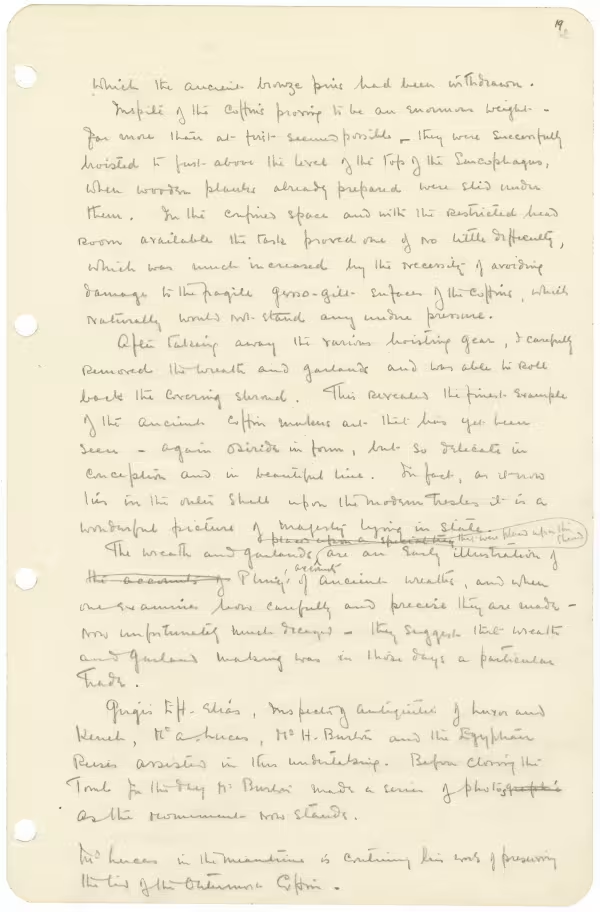TAA i.2.3.19
People mentioned: Harry Burton; Girgis Elias; Alfred Lucas; Reises.

© Griffith Institute,
University of Oxford
{17th October, continued}
which the ancient bronze pins had been withdrawn.
In spite of the coffins proving to be an enormous weight -
far more than at first seemed possible - they were successfully
hoisted to just above the level of the top of the Sarcophagus,
when wooden planks already prepared were slid under
them. In the confined space and with the restricted head
room available the task proved one of no little difficulty,
which was much increased by the necessity of avoiding
damage to the fragile gesso-gilt surfaces of the coffins, which
naturally would not stand any undue pressure.
After taking away the various hoisting gear, I carefully
removed the wreath and garlands and was able to roll
back the covering shroud. This revealed the finest example
of the ancient coffin makers art that has yet been
seen - again Osiride in form, but so delicate in
conception and in beautiful line. In fact, as it now
lies in the outer shell upon the modern trestles it is a
wonderful picture of majesty lying in state.
The wreath and garlands <placed upon a special tray that were placed upon the shroud> are an early illustration ofthe accounts of Pliny's <accounts> of ancient wreaths, and when
one examines how carefully and precise they are made -
now unfortunately much decayed - they suggest that wreath
and garland making was in those days a particular
trade.
Girgis Eff. Elias, Inspector of Antiquities of Luxor and
Keneh, Mr A. Lucas, Mr H. Burton and the Egyptian
Reises assisted in this undertaking. Before closing the
Tomb for the day Mr Burton made a series of photo<s>graphic
as the monument now stands.
Mr Lucas in the meantime is continuing his work of preserving
the lid of the outermost Coffin.